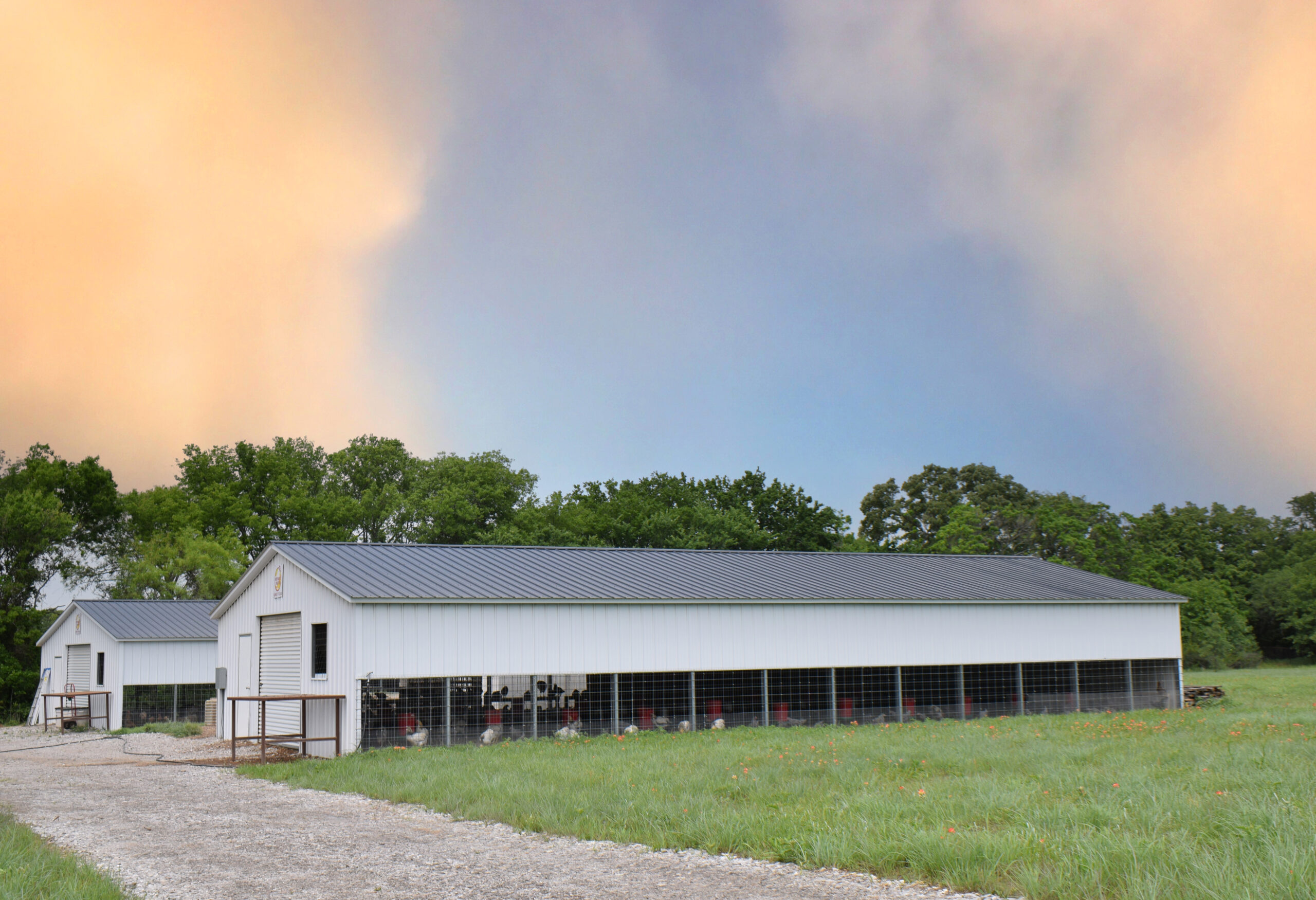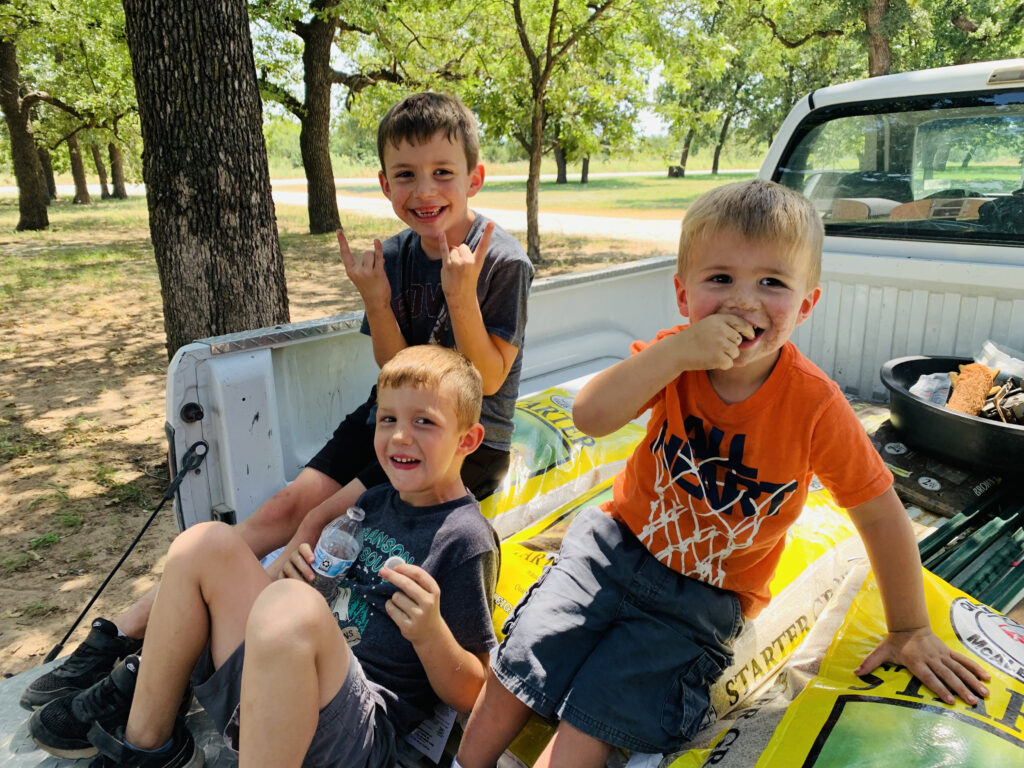Farm & Ranch
Hoffman’s Poultry: Passion and Production

When the Covid-19 pandemic struck, the country experienced a major shift in food production as Americans began seeking natural, organic sources. This trend saw a major rise in the poultry industry, as many turned to raising chickens as a low-maintenance daily food source.
At the time, Justin Hoffman had just begun to return to the agricultural roots in which he was raised, founding Hoffman’s Poultry. Since that time, the business has grown exponentially as a family-run operation that offers chicks, started pullets, and ready-to-lay hens to customers primarily in North Texas and Southern Oklahoma.
Raising poultry has not been an easy task, as they have gotten a taste of just how hard the industry truly is, but it is a business and lifestyle that the Hoffmans have come to appreciate and love, with no plans of slowing down.
“Farmers and ranchers, especially those who have prevailed for years, are my heroes. In the five years since the founding of Hoffman’s Poultry, I am beginning to comprehend what a successful farmer is,” Hoffman pondered. “It’s a person with exceptional drive, self-motivated, jack-of-all-trades, but also an expert in all, with a salt-of-the-earth work mentality. A farmer is humble, a strategic partner with other farmers and local businesses, and who has values beyond themselves. Some say it’s a lifestyle that sounds miserable for all work and no play. I disagree. I love it. I love the challenge, the strain on your daily motivation to keep going, the building of relationships you must cultivate, and the reward in satisfying a customer and the financial compensation that we created ourselves. It’s an exhilarating experience that I want to pursue as long as I’m alive.”
From the Beginning
Hoffman was raised on 120 acres near the small town of Vashti, Texas, in the southeastern part of Clay County. His parents, Bryan and Janice Hoffman, showed their children a strong work ethic through their example as they both worked off-farm jobs but always maintained side hustles.
“My dad instilled in us that if there was daylight, there was a dollar to make. My parents instilled a great work ethic in my two brothers and me, and I am forever grateful,” Hoffman said.
To read more, pick up a copy of the June issue of NTFR magazine. To subscribe by mail, call 940-872-5922.
Farm & Ranch
Acorn Toxicity

By Barry Whitworth, DVM, MPH
With the prolonged drought, most pastures in Oklahoma end up in poor condition. With the lack of available forage, animals may go in search of alternative foods.
If oak trees are in the pastures, acorns may be a favorite meal for some livestock in the fall. This may result in oak poisoning.
Oak leaves, twigs, buds, and acorns may be toxic to some animals when consumed.
To read more, pick up a copy of the November edition of North Texas Farm & Ranch magazine, available digitally and in print. To subscribe by mail, call 940-872-5922.

Farm & Ranch
Silver Bluestems

By: Tony Dean
There are a handful of grasses on North Texas grazing lands ranchers need to know, not because they are highly desirable, but rather because they are not of much value. I call them “decom” plants, which is am acronym for “Don’t Ever Count On Me.” Silver bluestem is a “decom” grass.
Silver bluestem is a perennial which grows in all areas of Texas. It can survive in almost all soil types, and in full sun conditions or in semi shade. It grows up to three feet tall and is easily recognized with the presence of the white fuzzy seed head. Also, one of the identifying characteristics of Silver bluestem is a bend in the stems at each node, causing the plants to take on a rounded shape as they mature.
To read more, pick up a copy of the November edition of North Texas Farm & Ranch magazine, available digitally and in print. To subscribe by mail, call 940-872-5922.

Farm & Ranch
Meanwhile Back At The Ranch

By: Rayford Pullen
Fall is here which means winter is closing in on us and before we officially get into winter, we need to make sure our factories are either producing or will be producing in a few months.
We have been pregnancy testing our cows this fall and if they are not bred or nursing a calf, we are bidding them adios. With annual costs somewhere between $900.00 and $1,000.00 per cow, those cows not producing a live weaned calf are costing us quite a bit.
To read more, pick up a copy of the November edition of North Texas Farm & Ranch magazine, available digitally and in print. To subscribe by mail, call 940-872-5922.
-

 Country Lifestyles2 years ago
Country Lifestyles2 years agoScott & Stacey Schumacher: A Growth Mindset
-

 Country Lifestyles8 years ago
Country Lifestyles8 years agoStyle Your Profile – What your style cowboy hat says about you and new trends in 2017
-

 HOME8 years ago
HOME8 years agoGrazing North Texas – Wilman Lovegrass
-

 Equine1 year ago
Equine1 year agoThe Will to Win
-

 Country Lifestyles5 years ago
Country Lifestyles5 years agoAmber Crawford, Breakaway Roper
-

 Outdoor9 years ago
Outdoor9 years agoButtercup or Primrose?
-

 Country Lifestyles8 years ago
Country Lifestyles8 years agoJune 2016 Profile – The man behind the mic: Bob Tallman
-

 Country Lifestyles8 years ago
Country Lifestyles8 years agoDecember 2016 Profile, Rusty Riddle – The Riddle Way





